- The mission of Mt. San Jacinto College is to provide quality, educationally enriching experiences, programs and opportunities designed to empower students to serve as productive citizens in a dynamic and complex world.
School Highlights
Mt San Jacinto Community College District serves 21,870 students (30% of students are full-time).
The college's student:teacher ratio of 26:1 is lower than the state community college average of 32:1.
Minority enrollment is 79% of the student body (majority Hispanic), which is more than the state average of 77%.
Quick Stats (2025)
- Enrollment: 21,870 students
- In-state tuition: $1,386
- Out-state tuition: $7,656
- Student:teacher ratio: 26:1
- Minority enrollment: 79%
- Source: Integrated Postsecondary Education Data System (IPEDS)
Top Rankings
Mt San Jacinto Community College District ranks among the top 20% of public schools in California for:
Category
Attribute
Community Size
School Overview
The teacher population of 845 teachers has stayed relatively flat over five years.
Mt San Jacinto Community College District
(CA) Community College Avg.
Carnegie Classification
Associate's Colleges: Mixed Transfer/Career & Technical-High Traditional
Baccalaureate/Associate's Colleges: Associate's Dominant
Institution Level
At least 2 but less than 4 years
At least 2 but less than 4 years
Institution Control
Public
Public
Total Faculty
845 staff
294 staff
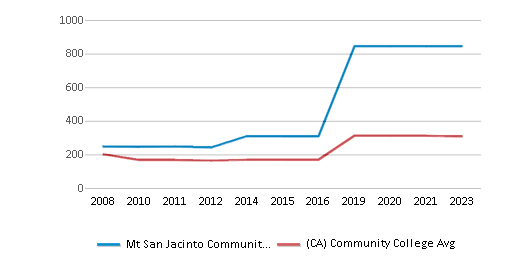
School Calendar
Student Body
The student population of Mt San Jacinto Community College District has grown by 40% over five years.
The student:teacher ratio of 26:1 has increased from 17:1 over five years.
The Mt San Jacinto Community College District diversity score of 0.67 is less than the state average of 0.70. The school's diversity has stayed relatively flat over five years.
Total Enrollment
21,870 students
2,311 students
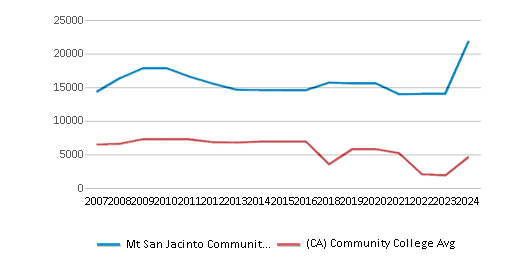
Student : Teacher Ratio
26:1
32:1
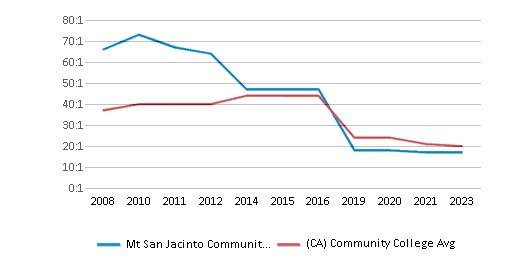
# Full-Time Students
6,594 students
1,232 students
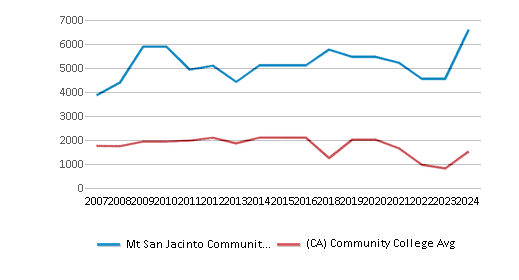
# Part-Time Students
15,276 students
8,299 students
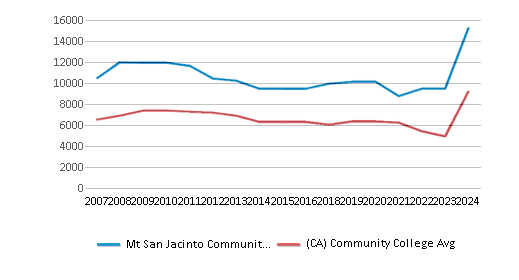
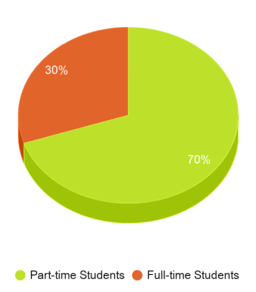
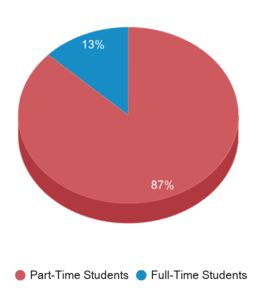
# Enrollment Undergraduate
218 students
240 students
# Full-Time Undergraduate Students
6,594 students
1,155 students
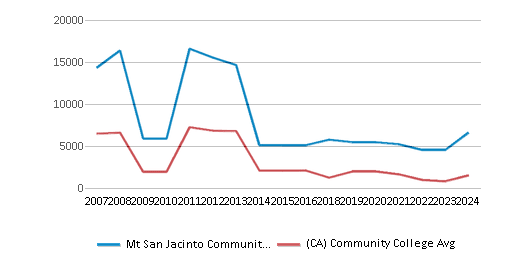
# Full-Time Graduate Students
n/a
63 students
# Part-Time Undergraduate Students
15,276 students
8,457 students
# Part-Time Graduate Students
n/a
10 students
Total Dormitory Capacity
n/a
140 students
% American Indian/Alaskan
n/a
n/a
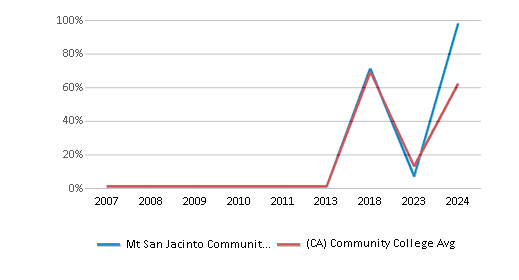
% Asian
7%
13%
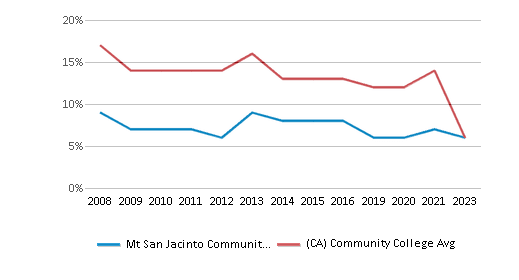
% Hispanic
52%
47%

% Black
6%
7%
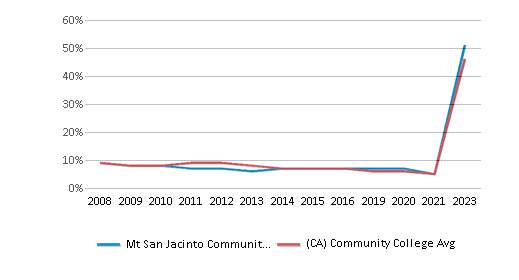
% White
21%
23%
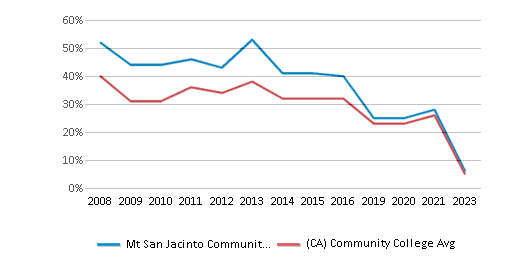
% Hawaiian
n/a
1%
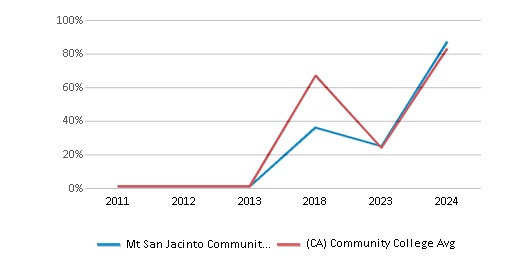
% Two or more races
5%
5%
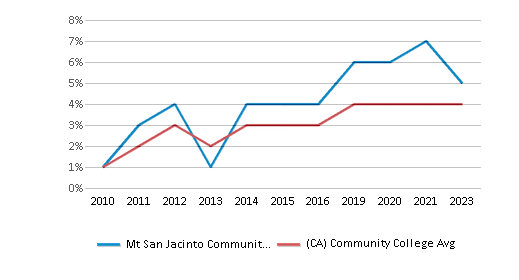
% Non Resident races
n/a
1%
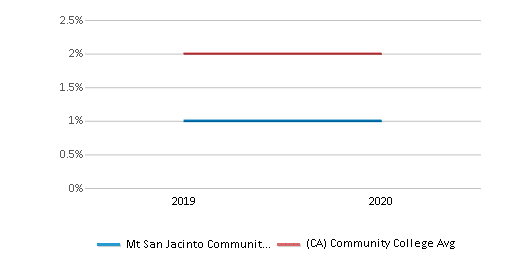
% Unknown races
7%
3%
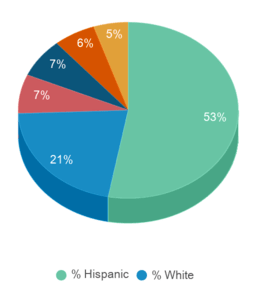
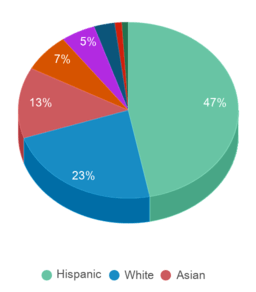
Diversity Score
0.67
0.70
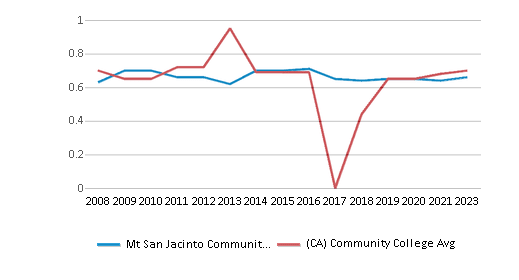
College Completion Rate (Students who graduate in less than 4 years)
0.3237%
0.4221%
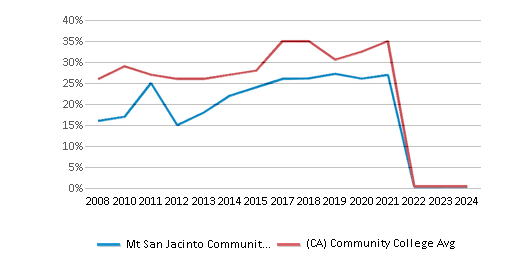
College Completion Rate (Students who graduate in 4 years or more than 4 years)
n/a
0.4304%
Average Graduate Earnings (10 Years)
$32,000
$34,700
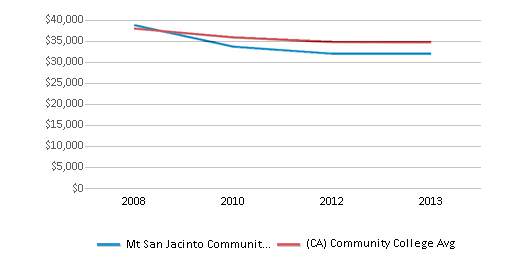
Tuition and Acceptance Rate
The public in-state tuition of $1,386 is more than the state average of $1,236. The in-state tuition has stayed relatively flat over four years.
The public out-state tuition of $7,656 is more than the state average of $6,547. The out-state tuition has declined by 25% over four years.
In-State Tuition Fees
$1,386
$1,236
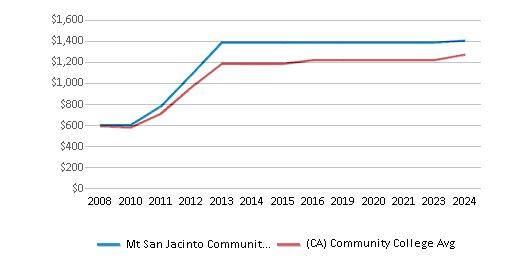
Out-State Tuition Fees
$7,656
$6,547
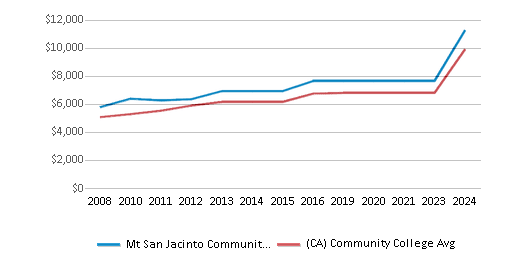
% Students Receiving Some Financial Aid
87%
85%
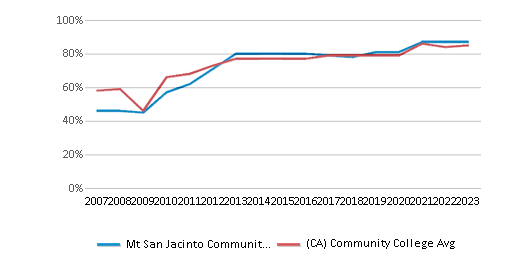
Median Debt for Graduates
n/a
$10,500
Median Debt for Dropouts
$5,500
$4,750
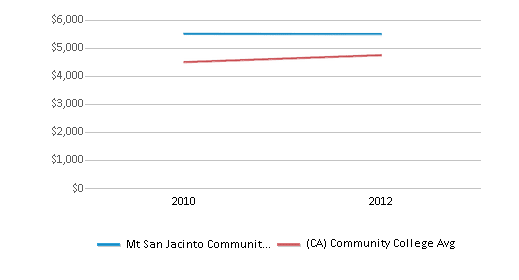
Acceptance Rate
n/a
92%
Source: 2024 (or latest year available) Integrated Postsecondary Education Data System (IPEDS) , School Administrators
School Notes
- The Mt. San Jacinto Community College District was formed in 1962 by a vote of the citizens in Banning, Beaumont, Hemet and San Jacinto. The college enrolled its first students in the fall of 1963, holding classes in rented facilities. The San Jacinto Campus was opened in 1965 with two buildings and has grown into a comprehensive college campus serving the needs of students and the community. In 1975, the residents of Temecula, Lake Elsinore, Perris and adjacent areas voted to join the Mt. San Jacinto Community College District, increasing the college's area to the present 1,700 square miles. Although the boundaries have remained stable since 1975, the District has changed dramatically, especially since the 1980's. In recent years, unprecedented population growth has fostered the highest rate of enrollment increase of all 109 community colleges. With the rapid growth in enrollments, the District has engaged in extensive planning and development to ensure state-of-the-art learning environments for Mt. San Jacinto College students. The San Jacinto Campus has been master-planned and essentially will be rebuilt over the next 15 to 20 years to accommodate 12,000 to 15,000 students. In the fall of 1993, the Alice P. Cutting Business & Technology Center opened to students with new laboratories for Business, Computer Information Science, Engineering Technologies, Electronics and Photography. In the fall of 1995, a state-of-the-art music building opened on the San Jacinto Campus. Mt. San Jacinto College is accredited by the Accrediting Commission for Community and Junior Colleges of the Western Association of Schools and Colleges, a regional accrediting body recognized by the Council for Higher Education Association and the U. S. Department of Education, Board of Registered Nursing and the Board of Vocational Nursing and Psychiatric Technician Examiners.
Frequently Asked Questions
How much does Mt San Jacinto Community College District cost?
Mt San Jacinto Community College District's tuition is approximately $1,386 for In-State students and $7,656 for Out-State students.
What is Mt San Jacinto Community College District's ranking?
Mt San Jacinto Community College District ranks among the top 20% of community college in California for: Largest student body.
Recent Articles

Obtaining Your Bachelor's Degree at a Community College
Explore the evolving landscape of community colleges offering bachelor's degrees, addressing affordability, accessibility, and workforce needs.

A to Z of Community College Certificates and Courses
From business and healthcare to technology and skilled trades, the article showcases the breadth of options available to students seeking to enhance their knowledge, develop new skills, or pursue career advancement.

What is a Community College?
This comprehensive guide explains what a community college is, its history, and its role in higher education. It covers the types of programs offered, differences from four-year colleges, benefits of attending, and important considerations for prospective students, providing valuable insights for those exploring educational options.






